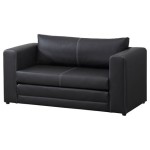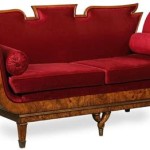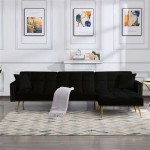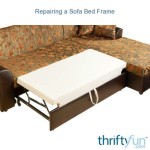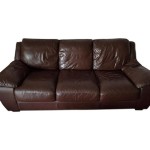Kiln Dried Hardwood Sofas: An Examination of Durability and Value
The selection of furniture for a living space represents a significant investment, both financially and aesthetically. Among the numerous options available, sofas constructed with kiln-dried hardwood frames offer a compelling proposition due to their inherent durability and longevity. This article explores the significance of kiln-dried hardwood in sofa construction, outlining the advantages it offers over alternative materials and detailing the factors that contribute to its superior performance.
The foundation of any well-constructed sofa lies in its frame. The frame provides the structural support that determines the sofa's resilience, stability, and overall lifespan. Subpar framing materials can lead to sagging, warping, and ultimately, premature failure of the sofa. Consequently, the choice of framing material is paramount in ensuring a lasting and comfortable seating solution.
Hardwood is a naturally robust material sourced from deciduous trees like oak, maple, and cherry. These woods are known for their density and strength, making them ideal for load-bearing applications. However, hardwood in its raw form contains moisture, which can fluctuate significantly with changes in humidity and temperature. These fluctuations can result in warping, cracking, and weakening of the wood structure over time. This is where the kiln-drying process becomes crucial.
Kiln drying is a controlled process of removing moisture from wood in a specialized oven, known as a kiln. This process reduces the moisture content of the wood to a stable level, typically between 6% and 8%. This level minimizes the risk of dimensional changes and ensures that the wood maintains its structural integrity throughout its lifespan. The process involves precise control of temperature, humidity, and airflow to prevent defects like checking (surface cracks) and warping.
Dimensional Stability and Reduced Risk of Warping
One of the primary benefits of using kiln-dried hardwood in sofa construction is its enhanced dimensional stability. Wood that has been properly kiln-dried is far less susceptible to warping, twisting, or shrinking in response to changes in environmental humidity. This stability is particularly important in regions with significant seasonal variations in humidity levels. A sofa frame made of unseasoned or improperly dried wood can exhibit noticeable changes in shape and structural integrity over time, leading to creaking, instability, and overall discomfort. Kiln drying mitigates these issues, preserving the sofa's original form and functionality for years to come. The controlled environment of the kiln allows for gradual moisture reduction, preventing internal stresses that can compromise the wood's structural integrity.
The process of kiln drying involves carefully monitoring the moisture content of the wood throughout the cycle. Sensors are used to track the moisture levels, and the temperature and humidity within the kiln are adjusted accordingly. This meticulous monitoring ensures that the wood is dried evenly and thoroughly, minimizing the risk of defects. The result is a stable and reliable material that is well-suited for demanding applications like sofa frames.
Furthermore, the dimensional stability of kiln-dried hardwood extends to the upholstery and other components of the sofa. When the frame remains stable, it prevents undue stress on the fabric, cushions, and springs, prolonging their lifespan as well. This integrated stability contributes to the overall durability and value of a kiln-dried hardwood sofa.
Enhanced Strength and Durability
Beyond dimensional stability, kiln drying also enhances the strength and durability of hardwood. By reducing the moisture content, the wood becomes denser and more resistant to bending and breaking. This increased strength is critical for supporting the weight of occupants and withstanding the stresses of everyday use. A kiln-dried hardwood frame can handle heavier loads and resist wear and tear more effectively than a frame made of green or improperly seasoned wood.
The strength of kiln-dried hardwood is particularly important in the joints of the sofa frame. Joints are the points where different pieces of wood are connected, and they are often the weakest areas of a frame. By using kiln-dried hardwood, these joints are less likely to loosen or fail over time. Strong, well-constructed joints are essential for maintaining the structural integrity of the sofa and preventing wobbling or instability. Skilled craftsmanship combined with high-quality kiln-dried hardwood results in a sofa that can withstand years of use without compromising its structural integrity. The use of durable fasteners, such as screws and dowels, further reinforces the joints and ensures long-lasting stability.
Additionally, kiln drying eliminates insects and fungi that can damage wood. The high temperatures within the kiln kill any existing pests and prevent future infestations. This is a significant advantage over air-dried wood, which can be susceptible to insect damage and decay. The resistance to biological degradation contributes to the long-term durability of kiln-dried hardwood sofas, making them a more sustainable and cost-effective choice in the long run.
Resistance to Mold and Mildew
Excess moisture in wood creates a breeding ground for mold and mildew, which can not only damage the wood structure but also pose health risks. Kiln drying significantly reduces the likelihood of mold and mildew growth by lowering the moisture content to levels that are unfavorable for these organisms. This is particularly important in humid climates where mold and mildew thrive. A kiln-dried hardwood sofa is less likely to develop unsightly stains and unpleasant odors caused by mold and mildew, ensuring a healthier and more comfortable living environment.
The resistance to mold and mildew also contributes to the longevity of the sofa. Mold and mildew can weaken the wood fibers over time, leading to structural damage and premature failure. By inhibiting the growth of these organisms, kiln drying helps to preserve the strength and integrity of the hardwood frame, extending the lifespan of the sofa. Regular cleaning and maintenance can further prevent the accumulation of moisture and debris that can promote mold and mildew growth.
Moreover, the absence of mold and mildew reduces the risk of allergic reactions and respiratory problems for occupants. Mold spores can become airborne and irritate the respiratory system, especially in individuals with sensitivities or allergies. A kiln-dried hardwood sofa is a healthier choice for families with young children, elderly individuals, or anyone with respiratory conditions. The reduced risk of mold and mildew contributes to a cleaner and healthier indoor environment.
In summation, the use of kiln-dried hardwood in sofa construction offers significant advantages in terms of dimensional stability, strength, durability, and resistance to mold and mildew. While sofas made with kiln-dried hardwood may represent a slightly higher initial investment, their long-term performance and longevity make them a worthwhile choice for discerning consumers. The absence of warping, cracking, and structural instability ensures years of comfortable and reliable use. Selecting a sofa with a kiln-dried hardwood frame represents a commitment to quality and durability, ultimately providing superior value and satisfaction.
Finding Quality Upholstered Furniture Wendi Gee Interiors

The Chesterfield Furniture Experts Handmade Kiln Dried Hardwood Frame Of Iron Oak

Sofa Frames What Kind Are The Best Stated Home Blog

Room Aria Sofa

Branca Sofa By Amy Crain Room Modern Luxury In Tribeca Greenwich

The Best Sofa Frame Construction Kiln Dried Vs Engineered Wood

Machine Made Fabric And Kiln Dried Hardwood Kiev Sofa Set At Best In Noida Furnstyl

Sofa Frames What Kind Are The Best Stated Home Blog

Osgood Leather Sofa 75 Tight Back Nubuck Dartbrook Rustic Goods

Room Vienne Sofa

